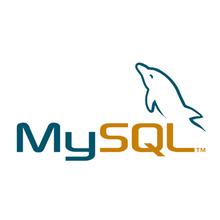|
INTRODUCTION
CAVITY is a structure-based protein binding site detection program. Identifying the location of ligand binding sites on a protein is of fundamental importance for a range of applications including molecular docking, de novo drug design, structural identification and comparison of functional sites. It uses the purely geometrical method to find potential ligand binding site, then uses geometrical structure and physical chemistry property information to locate ligand binding sites. CAVITY will provide a maximal ligand binding affinity prediction for the binding site. The most important, CAVITY could define accurate and clear binding site for drug design. If you want to download and know more about the CAVITY, please click here.
BASIC PARAMETER
- Whole protein mode: CAVITY will detect the whole protein to find potential binding sites, and this is the default mode.
- Ligand mode: CAVITY will detect around the given Mol2 file. It helps the program do know where the real binding site locates. In most cases, CAVITY could locate the binding site without given ligand coordinates, and you may try this mode if you are dissatisfied with the result from whole protein mode.
- Values for SEPARATE_MIN_DEPTH, MAX_ABSTRACT_LIMIT_V, SEPARATE_MAX_LIMIT_V and MIN_ABSTRACT_DEPTH are as follows according to the different inputs.
1. Standard :8/1500/6000/2 (common cavity)
2. Peptides :4/1500/6000/4 (shallow cavity, e.g. piptides binding site, protein-protein interface)
3. Large :8/2500/8000/2 (complex cavity, e.g. multi function cavity, channel, nucleic acid site)
4. Super :8/5000/16000/2 (super sized cavity)
Output Files
CAVITY will output the following visual files for viewing the detection result.
- name_surface.pdb: The output file storing the surface shape of the
binding-site and the CavityScore. It is in PDB format, and user can use
molecular modeling software to view this file and obtain an insight into
the geometrical shape of the binding site. User can view this file by
plain text editor, and check the predicted maximal pKd of the binding
site. This value indicated the ligandability of the binding site. If
it is less than 6.0(Kd is 1uM), suggests that this binding-site may be
not a suitable drug design target.
- name_vacant.pdb: The output file storing the volume shape of the
binding-site. It is in PDB format, and user can use molecular modeling
software to view this file and obtain an insight into the geometrical
shape of the binding site.
- name_cavity.pdb: The output file storing the atoms forming the
binding-site. It is in PDB format, and user can use molecular modeling
software to view this file and obtain an insight into the residues of
the binding site. It is the visual version of "name_pocket.txt".
Notice: Some molecular modeling software may not display these files
correctly, please try different software if you could not view the
results file. (Pymol is recommended to support these output files.)
|
|









